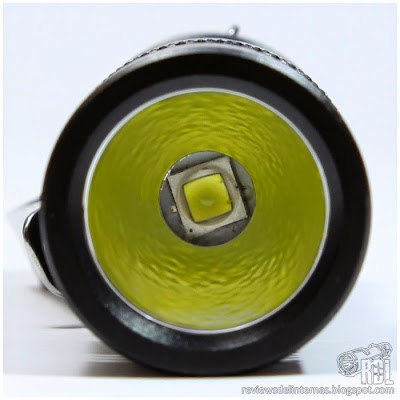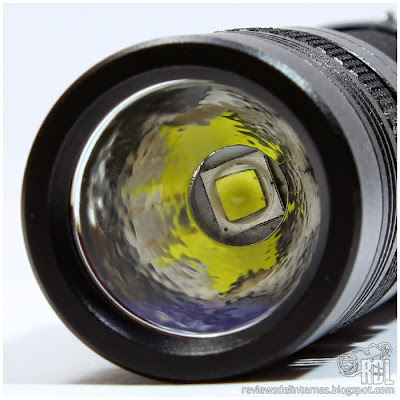SUNWAYMAN V11R L2
LED: CREE XM- L2 T6 CW
Battery: 1x CR123, 1x RCR123 (AA, 14500 with optional extender)
Modes: Variable adjustment
Switch: Magnetic ring
Date: July 2014
Links:
Banggood / AP-05 Extender / RdL / ForoLinternas
INTRODUCTION:
If we have recently seen the new updated version of the M11R, today it is the turn of the V11R, undoubtedly the most popular flashlight from asian manufacturer Sunwayman. This is an update of the LED emitter, from the XM-L to XM-L2, without any visible change or modification in the design of the popular flashlight. Beside the V11R I acquired an AP-05 Extender, which will allow us to compare performance in all power options, including NiMH AA batteries.
The presentation of the product is similar to the one we saw in the first version, with updated printings now showing the new specifications for max output obtained by updating the emitter, from 190 to 216LM for CR123a specifications and 570LM against 500LM Turbo mode with RCR.
Inside the box we find the torch accompanied by the usual accessories like a spare o-ring set, a wrist strap adjustable with small carabiner, optional titanium switch cover and quality fabric holster, and of course user manual and warranty card.

EXTERIOR FINISH:
Externally, the new V11R L2 is virtually identical to the first version so I’ll try not to overdo, being its relatively compact size and combination of magnetic ring variable adjustment and forward switch in the tail the hallmarks of this Sunwayman.

Aluminum is anodized HA III grade, and has a very nice matte black tone uniform throughout all the components of the flashlight. Different engravings are well defined and easy to read thanks to the high contrast obtained between the black background and white lettering.
The new XM-L2 is behind a small reflector slightly rough, properly centered. The bezel of the flashlight is identical to that found in the M11R, being smooth and without any battlements, and in this model completely lacking of any laser engraving. The lens features AR treatment with typical purplish halo, already seen in other Sunwayman.
The magnetic ring, although visually identical to the M11R, totally lacks detents and offers a fairly good strength that allows us to freely adjust the output by rotate left or right. We found an engraving that shows the maximum and minimum position, separated by about 120 degrees.
The knurling ring makes it easy and comfortable to select output by rotation with one hand, and the plane in which there is an arrow-shaped indicator helps us to know in advance, with the flashlight off for example, preset adjustment.
The threads are short like all V11R and M11R with just one and a half rotation. The cut is trapezoidal, and are anodized so it is possible to block the flashlight slightly unscrew the two pieces.
Again the threads are compatible with the M11R, so we can use the extender for AA / 14500 AP-05, which is sold separately.
The tube housed in forward switch that goes retained by a threaded ring installed in the tail of the flashlight. The flashlight comes with the classic configuration switch (silicone coating for the button), but it is easy to install the optional titanium fashion switch, although I find it not as comfortable as the classic in my point of view. Both options allow you to place the flashlight in tailstand solidly thanks to three battlements surrounding the button, all of which are perforated for easy installation of the wrist strap.
The clip on this occasion show a polished metallic finish and is attached to the flashlight by pressing into a groove located along the tailcap.
USER INTERFACE:
As you know, the V11R is famous for offering a convenient user interface that combines the benefits of variable adjustment by magnetic ring and the versatility of having a mechanical switch that allows us forward momentary activation at any ring position.
- On and Off: Activate the flashlight by the rear switch, and turn off as well. We can make momentary activation as long as we maintain pressure on the switch without clicking.
- Variable adjustment: Approx. 120 degrees of tilt of the ring you can adjust the amount of light emitted flashlight, turning it clockwise to increase and counterclockwise to decrease, and it is continuously variable (no steps).
- MIN and MAX positions: Both ends of travel of the ring corresponding to the positions of maximum and minimum output, identified by a small engraved on the body of the flashlight. These positions are very comfortable to adjust “on the fly” with the V11R off when we turn the light intensity.
- Mechanical lock: The flashlight can be blocked by thread to prevent any accidental ignition. By having a mechanical switch, there is no parasitic current.
As we saw a few days ago in the analysis of variable adjustment of the new Nitecore SRT3, the V11R has a not very linear system of increase light output, which concentrates a large jump in the output of the flashlight in the last 45 degrees.

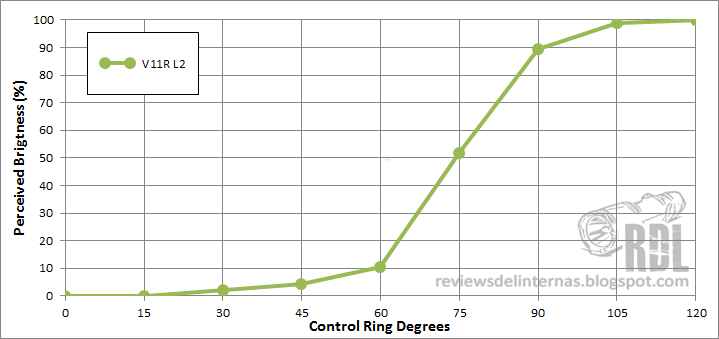
Applying the correction factor for estimating how would this curve be fitted to human eye subjective perception of increased brightness according to Steven’s power law, things continues to show a big jump in the second half of the adjustment zone.
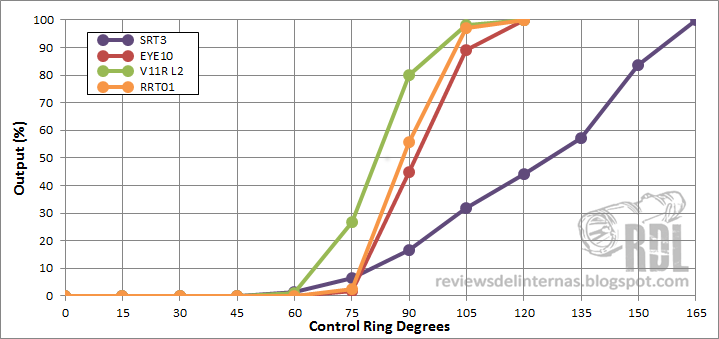

PERFORMANCE:
The new XM-L2 promises a 70LM increase in the output of a flashlight against the U2 old version, which I have seen through the usual test in the integrating sphere.
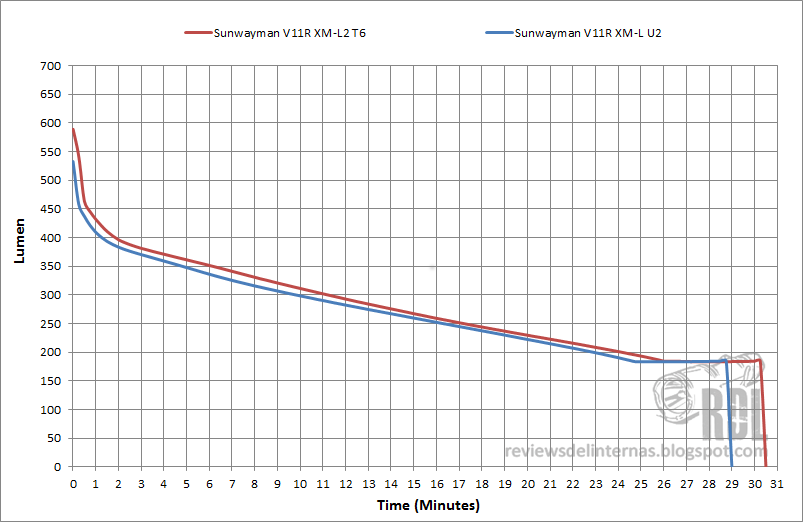
And thanks to keep the same driver and type of regulation, as we can see the curve is very similar, with the most powerful belonging to the XM-L2 and scratching a few minutes off the U2 version.
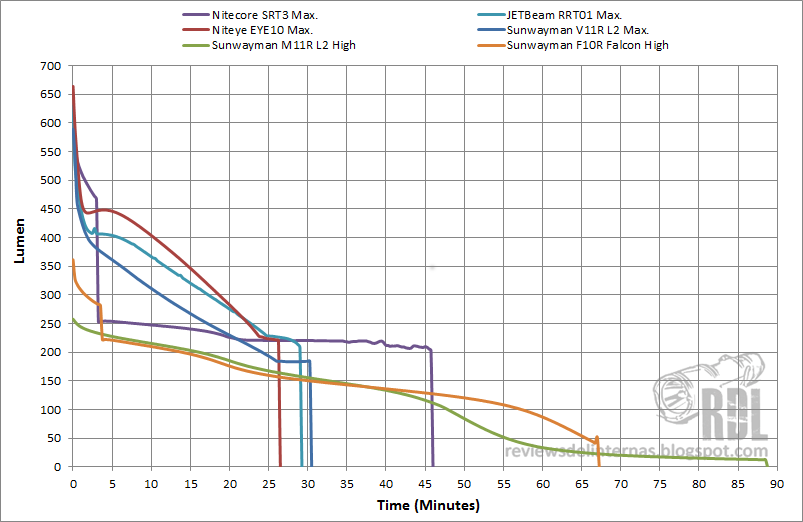
Compared to other flashlights that use the same battery, the V11R remains somewhat overshadowed by the tremendous efficiency shown by the new Nitecore SRT3 direct consequence of maintaining the original U2 used by the same driver version.
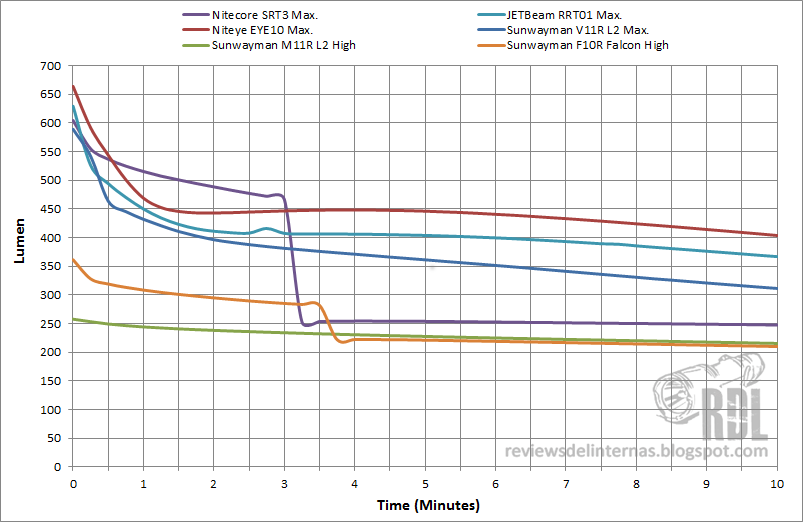
A zoom of the first 10 minutes will help us to see more easily as are the initial moments of each light, which I think is very useful for this type of EDC tools are often used for short time intervals for specific tasks, leaving the tasks demanding prolonged use for flashlights with much more capacity batteries as it can be 18650 per example.
Finally we will look at the performance with the AP-05 Extender to power the V11R with AA batteries.
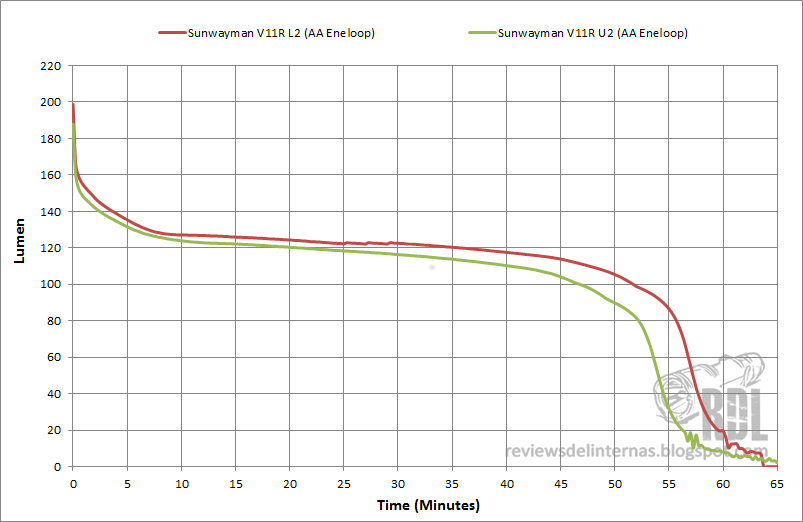
As with RCR, we see a slight improvement in performance and efficiency, but nothing great.

The new SRT3 offers higher peak power, thanks to the efficiency of the modern driver. I added, in comparison, the curve of the EagleTac D25A maximum mode, so you can see that this type of compatible flashlights with various input voltages are still a step back as far as efficiency at low voltages are concerned.
BEAM PROFILE:
Nothing changes against the XM-L U2, U3 Mirage, V10R Ti +, Sirius, M11R… because the reflectors are equal. The flashlight projection maintains a floody profile, and retains the slight darker than the rest spill ring around the hotspot, but this unit is much less visible than in the recently analyzed M11R L2.
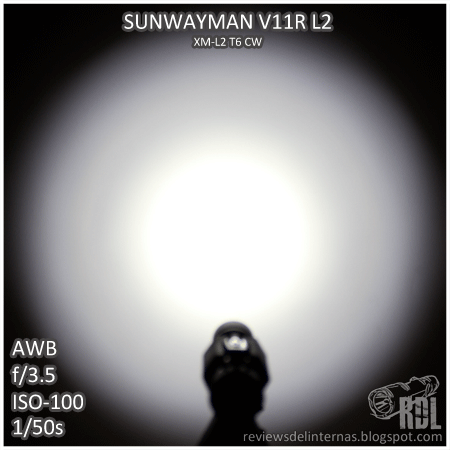


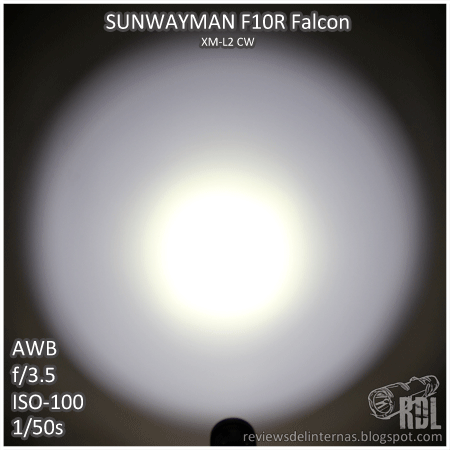
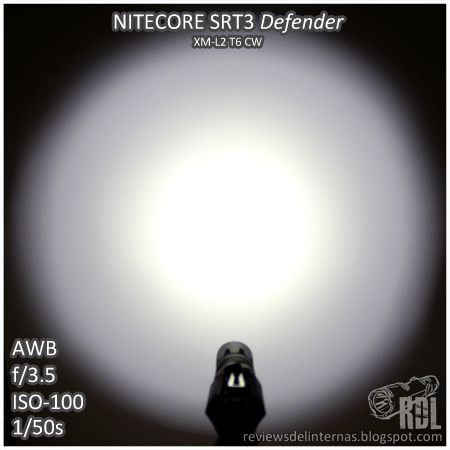
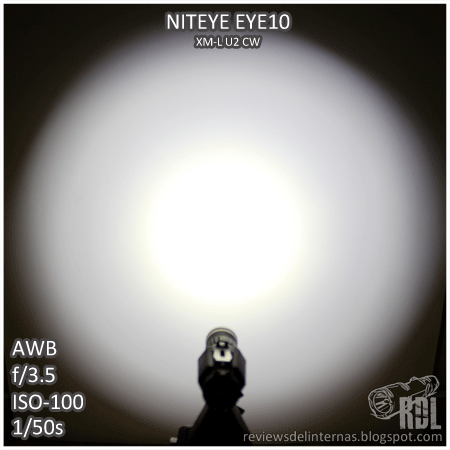
The new XM-L2 has a pretty good tint with a cold tone in the blue side of color chart. After contacting the manufacturer, I was told that the updated V11R L2 and M11R L2 with uses two tints, 1A and 1B depending supplier availability. They also confirm that the LED emitter belongs to bin T6, since the availability of this LED in U2 bin is not stable at this time.
PERSONAL CONCLUSION:
As with M11R, this exclusive LED emitter update may not justify the purchase it if you already have the original V11R, but certainly seems a good gesture that other manufacturers could copy and update their popular models to this (now not so) new CREE powerLED. The exterior design is successful and certainly very attractive, so it also seems a wise have left intact.
In general, the V11R is a light that has left many nights ahead and now with a XM-L2 rejuvenates further.
Negatives: Might as to update the model, Sunwayman could have updated the circuit to scratch more linear performance out of the new XM-L2, which continues behaving direct drive-like when the flashlight is fed with rechargeable batteries. There may also be interesting to slightly adjust increased brightness curve of variable adjustment to make it more gradual, but I fear that updating the LED emitter has not involved any change in the regulator circuit driver.
Positives: Well built, compact and charming. Excellent user interface for pocket-able flashlight with smart and simple UI, with a relatively high output and the great possibility to custom-set the output to fit perfectly with the function for which we need the flashlight.
BONUS PIC: ![]()





